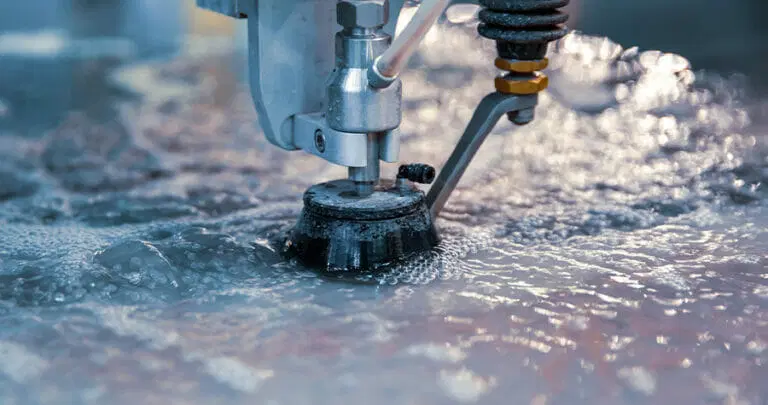Introduction:
In the realm of industrial manufacturing, precision and efficiency are paramount. As industries evolve and consumer demands become more intricate, the need for advanced cutting technologies has never been more critical. One such innovation that has garnered widespread attention and acclaim is the waterjet machine. Combining the power of high-pressure water streams with cutting-edge technology, waterjet machines have emerged as versatile tools capable of shaping a myriad of materials with unparalleled precision. In this article, we explore the intricacies of waterjet machines, their applications across various industries, and the transformative impact they have had on modern manufacturing processes.
Understanding Waterjet Machines:
A waterjet machine is a sophisticated piece of equipment designed to harness the force of pressurized water to cut through a wide range of materials with precision and efficiency. These machines typically consist of several key components:
Pump: The heart of the waterjet machine, the pump generates the high-pressure water stream necessary for cutting. Depending on the application, pumps may utilize hydraulic intensifiers or direct-drive systems to achieve pressures exceeding 60,000 pounds per square inch (psi).
Nozzle:
The nozzle is responsible for directing the pressurized water stream onto the material being cut. Nozzles are engineered to withstand the intense forces and abrasion encountered during cutting operations, ensuring consistent performance and longevity.
Abrasive Delivery System (Optional):
In abrasive waterjet cutting, abrasive particles such as garnet are mixed with the pressurized water stream to enhance cutting capabilities. Abrasive delivery systems carefully control the introduction of abrasive material into the waterjet stream, optimizing cutting efficiency and accuracy.
Applications Across Industries:
Waterjet machines have found widespread application across a diverse array of industries, thanks to their versatility, precision, and ability to cut virtually any material. Some key sectors where waterjet machines are extensively utilized include:
Aerospace:
In the aerospace industry, where precision and reliability are paramount, waterjet machines play a crucial role in the fabrication of aircraft components, engine parts, and structural elements. Waterjet cutting offers aerospace manufacturers the ability to cut intricate shapes from a variety of materials, including titanium, aluminum, and composite materials, with exceptional accuracy and minimal material waste.Automotive: From precision-cutting gaskets and seals to shaping complex automotive body panels, waterjet machines have become indispensable tools in automotive manufacturing. The ability to cut materials ranging from metals and plastics to composites and glass makes waterjet cutting an ideal solution for producing high-quality automotive components with tight tolerances.
Architecture and Design:
Waterjet machines are revolutionizing the field of architecture and design, enabling designers to create intricate patterns, textures, and shapes in a wide range of materials. Whether it’s cutting custom floor tiles, decorative facades, or intricate sculptures, waterjet technology empowers architects and designers to push the boundaries of creativity while maintaining precision and quality.
Electronics:
In the electronics industry, where precision is critical to the performance and reliability of electronic devices, waterjet machines are used for precise cutting of circuit boards, semiconductor materials, and electronic components. Waterjet cutting offers a non-thermal, non-contact cutting method that eliminates the risk of heat-induced damage to sensitive electronic materials, ensuring the integrity of the final product.
Advantages of Waterjet Machines:
Waterjet machines offer several distinct advantages over traditional cutting methods, making them a preferred choice for a wide range of industrial applications:
Precision:
Waterjet machines are capable of cutting intricate shapes and contours with exceptional precision, achieving tolerances as tight as ±0.001 inches. This level of precision is essential for industries where tight tolerances are required, such as aerospace, automotive, and electronics manufacturing.
Versatility:
Unlike some traditional cutting methods, waterjet machines can cut through a wide range of materials, including metals, plastics, ceramics, glass, stone, and composites. This versatility makes waterjet cutting suitable for a diverse range of applications across various industries.
Minimal Material Waste:
Waterjet cutting is a non-contact cutting process that produces minimal kerf width and generates little to no material waste. This not only helps to minimize material costs but also reduces the environmental impact associated with material waste disposal.
No Heat Affected Zone (HAZ): Unlike thermal cutting methods such as laser cutting and plasma cutting, waterjet cutting produces no heat-affected zone (HAZ) in the material being cut. This eliminates the risk of thermal distortion, warping, or metallurgical changes in the material, preserving its structural integrity and mechanical properties.
Future Trends and Innovations:
As technology continues to advance, the future of waterjet machines holds exciting possibilities for further improvements in cutting speed, accuracy, and efficiency. Some emerging trends and innovations in waterjet technology include:
Advanced Control Systems:
Future waterjet machines are likely to feature advanced control systems powered by artificial intelligence (AI) and machine learning algorithms. These intelligent control systems will optimize cutting parameters in real-time, maximizing cutting efficiency and quality while minimizing energy consumption and material waste.
Robotic Integration:
Robotics integration is another area of potential growth in waterjet technology, allowing for automated loading and unloading of workpieces, as well as robotic manipulation of the cutting head for complex 3D cutting tasks. Robotic waterjet systems offer increased flexibility, productivity, and cost-effectiveness, making them ideal for high-volume production environments.
Enhanced Abrasive Recycling:
As environmental sustainability becomes increasingly important, future waterjet machines are likely to incorporate advanced abrasive recycling systems that efficiently reclaim and reuse abrasive particles, reducing waste and minimizing operating costs.
Conclusion:
In conclusion, waterjet machines have revolutionized industrial cutting processes, offering unparalleled precision, versatility, and efficiency across a wide range of industries. From aerospace and automotive manufacturing to architecture, design, and electronics, waterjet technology has become an indispensable tool for manufacturers seeking to push the boundaries of creativity while maintaining the highest standards of quality and precision. As technology continues to advance, the future of waterjet machines promises even greater advancements in cutting speed, accuracy, and efficiency, cementing their position as a cornerstone of modern manufacturing processes.




